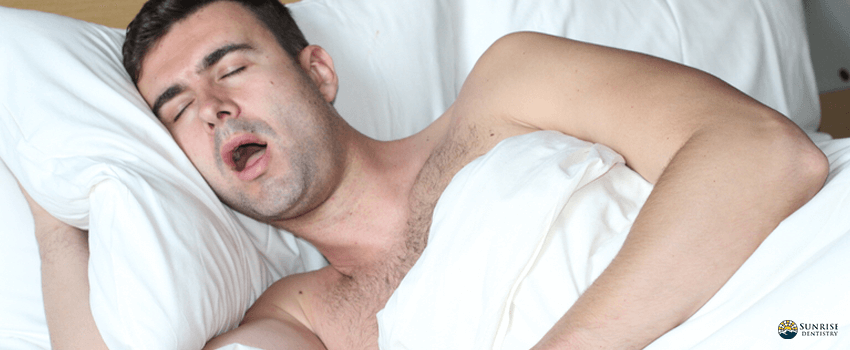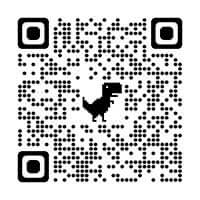Do you snore or often wake up with a parched mouth? Have you ever typed “How to stop mouth breathing at night” into your search bar? Then, mouth taping might just be the help you need.
Mouth taping is becoming a popular home treatment that encourages nose breathing while you sleep. Some people also do this to address problems like bad breath or snoring, a sign of sleep apnea.
The effectiveness of mouth taping has only been partially studied. Let’s discuss what research has discovered about it, how to tape your mouth safely, and alternatives to mouth taping for treating sleep-related problems.
What Is Mouth Taping?
Mouth taping is the practice of taping your mouth shut at night before sleeping. Some people choose to tape their mouths because they believe it helps them avoid the adverse effects of mouth breathing.
People attach a porous tape to the upper and lower lips to prevent a person from opening their mouth while sleeping. Taping the mouth shut before bed causes a person to breathe through their nose instead.
Can Mouth Taping Cure Sleep Apnea?
Mouth taping may be beneficial as a treatment for snoring, a sign of sleep apnea. A study was done on people with mild obstructive sleep apnea, where the patients were required to wear a porous patch over their mouth. This caused them to breathe through their nose and changed the angle of their tongue and palate. These changes resulted in significantly less snoring and fewer cases of lapsed breathing.
Some may market mouth taping as a possible treatment for sleep apnea, but it may not be enough to stop the breathing problems it causes. You might need more traditional sleep apnea treatments, like oxygen therapy via continuous negative airway pressure (CPAP).
How To Try Mouth Taping for Sleep Apnea
You should first talk to your doctor if you are interested in using mouth tape for sleep apnea. Here are the steps to get you started:
-
Apply petroleum jelly on the skin around your lips to prevent skin irritations and remove tape residue.
-
Next, place a piece of the tape horizontally on your lips. Make sure it covers your entire mouth area.
-
Add a little more tape to extend the tape slightly beyond your mouth. Fold each end in half to make small handles that will make removing the tape easier the next day.
Try mouth taping during the day to help you get used to it. It can also help you practice breathing through the nose throughout the day.
Many brands market their products as mouth tape for sleep apnea, which are available in drugstores or online. You can also try traditional surgical tape if you’re not ready to buy brand-name mouth tape for sleep apnea. You should remember that surgical tape may not be hypoallergenic and may cause some skin irritation.
Benefits of Mouth Taping For Sleep Apnea
People claim mouth taping reduces snoring, fatigue, and concentration problems. However, these claims are not supported by scientific research, which has only shown one benefit to mouth taping: a decrease in tiredness and snoring in patients with obstructive sleep apnea.
Mouth taping has not shown any benefits for asthma patients, but its proponents believe it reduces the adverse effects associated with mouth breathing like:
-
Sleep-disordered breathing
-
Cavities
-
Dry mouth
-
Bad breath
-
Gum disease
Side Effects of Mouth Taping
Is mouth taping safe for sleep apnea? The side effects of mouth taping have not yet been thoroughly studied, but some of the reported side effects include:
-
Sleep disruptions caused by trouble breathing through the nose or irritation caused by the tape
-
Lip irritation
-
Anxiety for people who feel uncomfortable taping their mouths shut
-
Pain when removing the tape, especially for people with facial hair
-
Difficulty breathing or discomfort
Future research is needed to uncover more side effects of mouth taping.
Alternatives to Mouth Taping For Sleep Apnea
You can find many alternatives to mouth taping, depending on why you think you need it.
Nasal Strips
Nasal strips are another option to reduce snoring. They are applied to the nose to open the nasal passages and promote nose breathing. Nasal strips have produced mixed results; some patients report snoring improvements, while others had no effect.
Practicing Good Sleep Hygiene
Some claim that mouth taping reduces daytime fatigue. Practicing these good sleep hygiene habits also helps you get the rest you need:
-
Consistent waking up and going to bed times.
-
Sleep in a quiet space that is free of light and noise.
-
Avoid looking at device screens before bedtime.
-
Avoid caffeine and alcohol before going to bed.
-
Exercise regularly.
Side Sleeping
Research has shown that people with and without sleep apnea tend to snore less if they sleep on their sides instead of their backs.
You should also consider buying a new cushion or mattress to make it easier to switch between sleeping positions. A good bed arrangement helps you achieve a good sleeping position that promotes spinal alignment and reduces pressure points.
Treating Allergies and Asthma
An estimated 25% of Westerners experience an allergic response to pollen or other substances in their airways. The most common cause of this reaction is nasal congestion. This can make breathing through your nose more difficult, especially at night.
People with asthma need to consult a doctor to manage their symptoms. They should also avoid triggers and take medication as needed.
Lifestyle Changes
Making these lifestyle changes can also improve your nighttime breathing:
-
Avoiding alcohol before going to bed
-
Quitting smoking
-
Cutting down on caffeine consumption
Losing weight also helps reduce your risk of sleep apnea if you are overweight.
Practicing Good Oral Hygiene
Some people are interested in mouth taping because it promises to cure bad breath. A regular oral hygiene routine that involves brushing, flossing, cleaning your tongue, and using mouthwash to clean your mouth also helps prevent bad breath.
Breathing Exercises
Mouth taping forces you to breathe through your nose while you sleep. You can also do this by practicing nose breathing exercises throughout the day.
Breathe in through your nose deeply until your belly expands. Then, breathe out through your nose until your belly deflates back into its original position. Do this several times until you feel calmness throughout your body.
Key Takeaway
Mouth breathing may be a serious medical concern if you experience persistent symptoms. Mouth taping may help, but you need to get used to it and you must use the right equipment. It’s best to talk to your doctor before you start using it. They can refer you to a sleep specialist if you need further treatment.
Experience better sleep with Sunrise Dentistry.
Our dentist in Durango, CO, can help treat your sleep apnea with oral appliances that are convenient and easier to use. They can also screen you for sleep apnea, as they are trained to recognize its signs and symptoms. Contact us and experience better sleep and a healthier body today.





